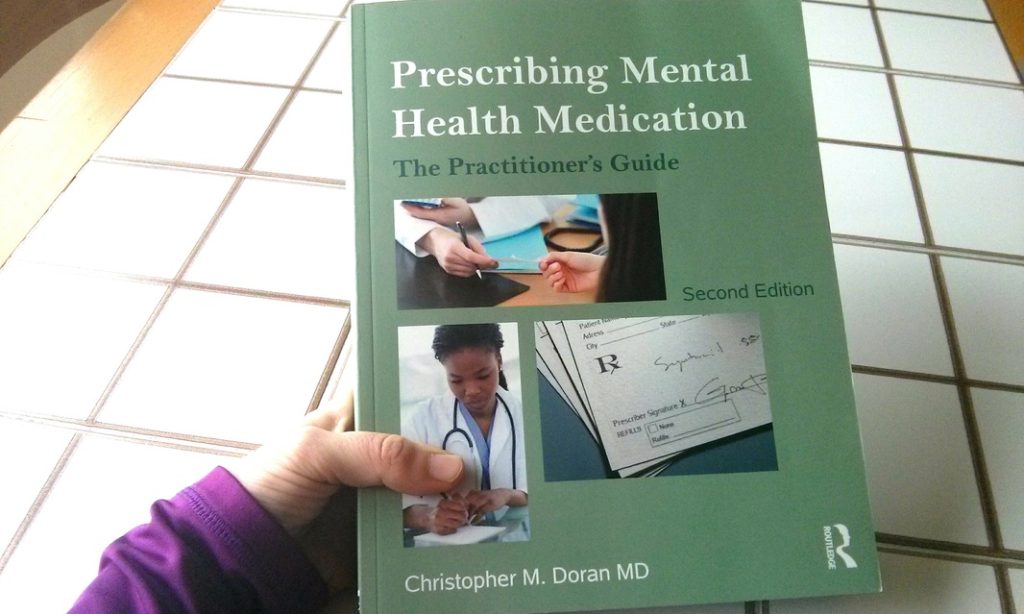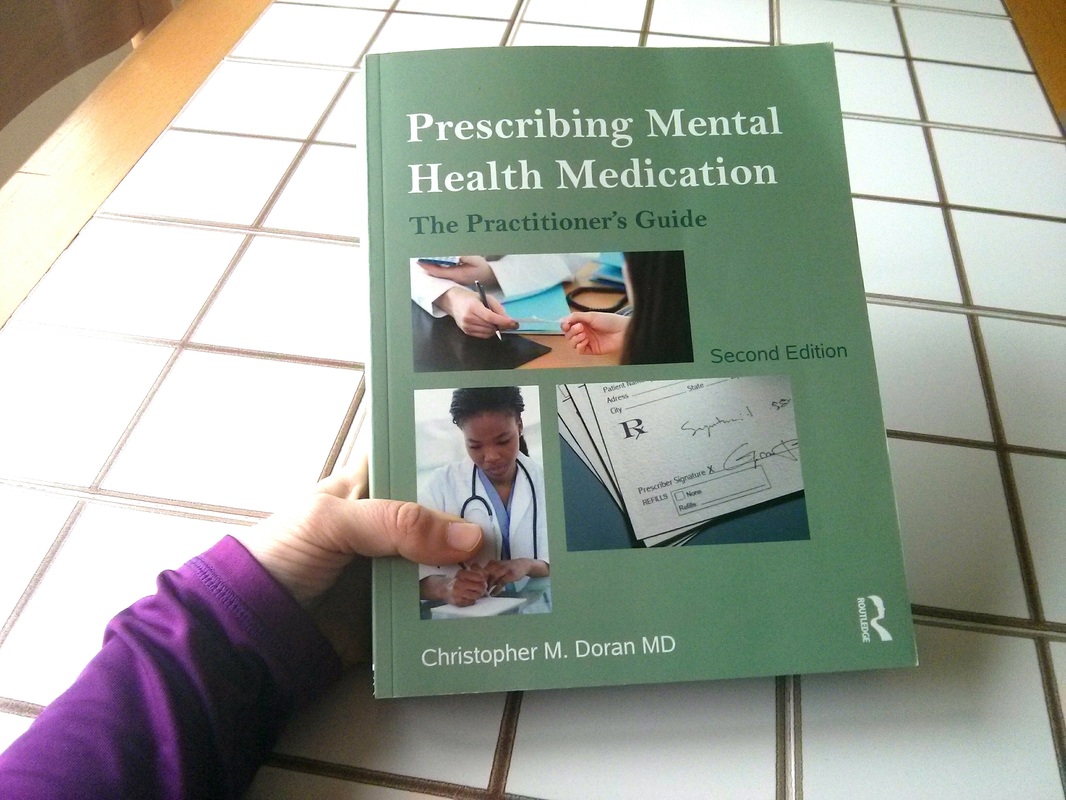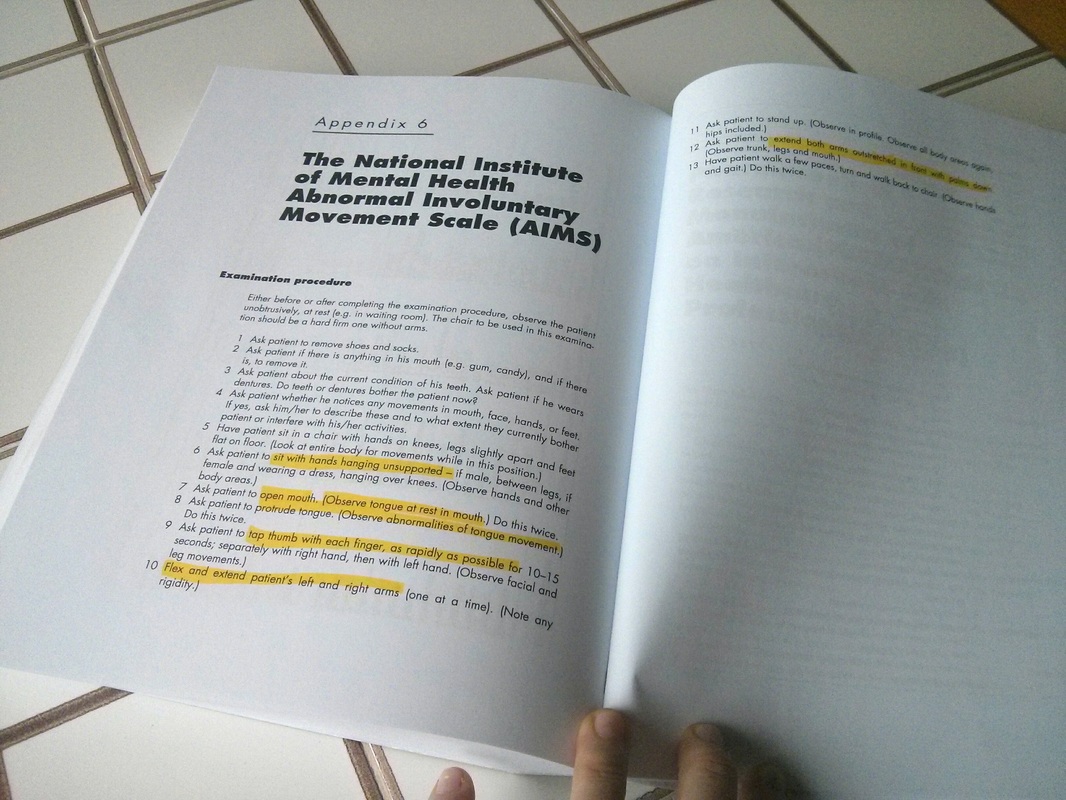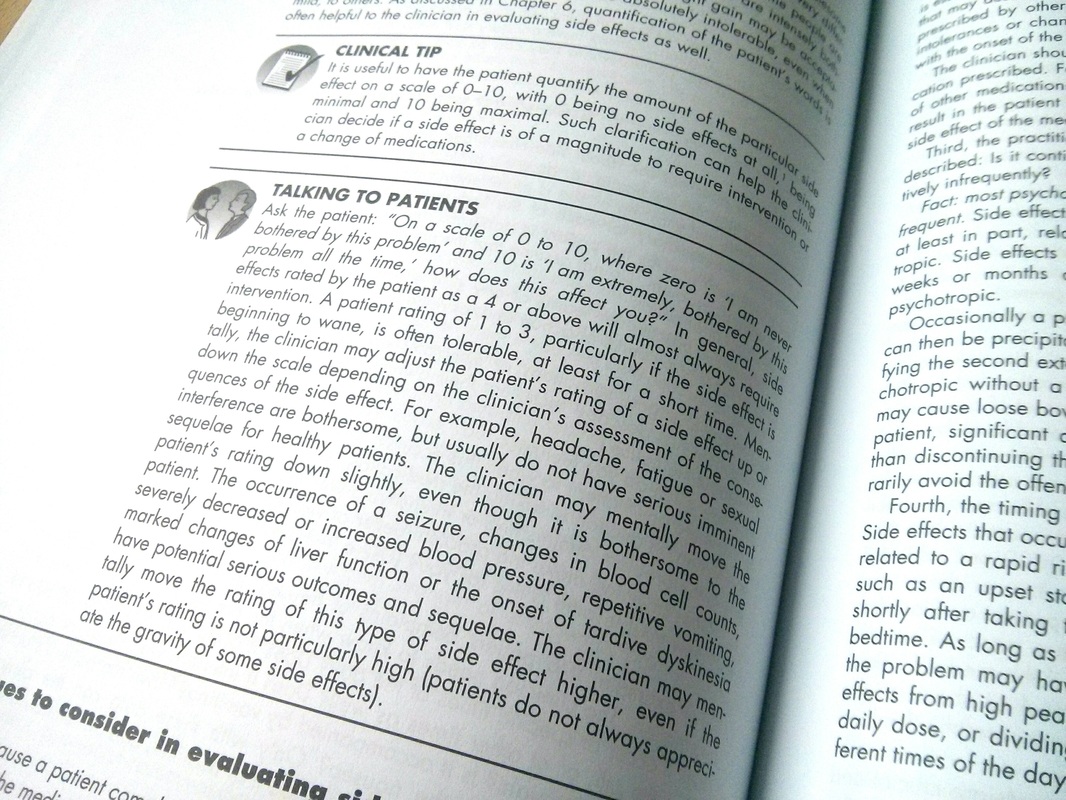Prescribing Mental Health Medications: The Practitioner’s Guide

Prescribing Mental Health Medication: The Practitioner’s Guide is a one-of-a-kind practical framework for prescribing, monitoring, and stopping psychotropic medication. The book covers the overall process of psychiatric medication management, from the initial interview to writing a prescription.
The book is divided into five sections:
- General principles (~10% of book)
- Medication management start to finish (~25%)
- Medicating special populations (~30%)
- Medication dilemmas and their clinical management (~20%)
- Competent clinical practice (~15%)
The author, Christopher Doran is a psychiatrist, and he includes his wife Maureen O’Keefe Doran who is an advanced practice registered nurse in the acknowledgments. He writes lucidly and especially practically. The book directly targets individuals prescribing psychiatric medication, primarily on an outpatient basis.
The book is entirely in black and white with no colored images. There are adequate tables, charts, and graphs. No images. The margins are wide leaving space for taking extra notes. This book is not meant to provide the neuroscientific background or in-depth pharmacology of each individual drug class. The book is absolutely a no-nonsense guide to the practical aspects of prescription. The index is somewhat short, but this hasn’t been a problem for me yet.
As a psychiatric medication prescriber, I think this is a must-have. It is the most functional book on this topic that I have read. While Stephan Stahl provides detailed psychopharmacological principals, Doran gives you the nuts and bolts of the day-to-day practice of psychiatric medication management. While Sobel’s Successful Psychopharmacology (2012) book also offers a readable and straight forward guide to prescribing specific classes of medication, Doran’s text is much more comprehensive. Doran, for example, includes special populations (pregnancy, medically ill, children, older adult, etc.), laboratory monitoring, and a primer on psychogenetics. The two books sitting on my desk at work? Stahl’s The Prescriber Guide and THIS!
My favorite parts of the book:
- Detailed descriptions of psychotropic “danger zones” (e.g. P-450 issues, serotonin syndrome, anticholinergic intoxication, lithium toxicity, QTc prolongation, etc.) and sample dialogues for discussing these issues with patients.
- Descriptions of 12 “myths” and “truths” about psychotropic medication
- An appendix including the Mental Health Abnormal Involuntary Movement Scale examination procedure
- Tips for the modern prescriber including internet security, social media, preauthorization, media advertising and interacting with pharmaceutical representatives.




0 Comments on "Prescribing Mental Health Medications: The Practitioner’s Guide"